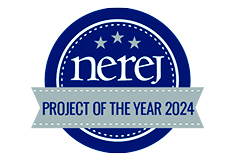News: Spotlights
Posted: May 30, 2013
Seeing greater returns from solar installations
The rate of commercial solar installations in Massachusetts continues to accelerate, and the state's current solar program should be closed by sometime this fall. The state's second program has not been announced, but it is understood by all that the current high rates of return for solar investors are not sustainable. The second program will likely cut into rates of return by reducing the dollar value of the state-created Solar Renewable Energy Credits (SRECs).
Many commercial property managers/developers are just now beginning to see how installing a solar array on one property can pay for the common area electricity at multiple facilities, thus reducing or eliminating electricity costs for the life of the solar array. In addition, many are just discovering that their rate of return is going to be based on the electrical meter the solar array will be connected to as this establishes the dollar value for the kilowatt hour generated by the system.
Solar kilowatt hours are not transferred from the solar array; rather the dollar credits that the solar array receives from the utility are transferred. These dollar credits are then assigned to other electrical meters, offsetting their bills. This assumes that there is excess power generated by the system (dollar credits) that can then been transferred to other meters. Many clients are now looking to sell their utility credits in long term contracts to other utility customers and to build the maximum system that their property will accommodate. This is, in essence, the same business arrangement that underpins the large scale solar farms that are being developed.
Our approach at Trinity Solar, the largest East Coast solar developer, is to take a comprehensive approach to reviewing not just the facility where a solar array will be installed, but also the entire portfolio of properties and associated meters of our clients. This comprehensive approach is allowing our clients to make the investment in time to review solar for their entire portfolio. The ability to substantially reduce their long-term operating costs while earning a double digit net IRR on their solar investments has several of our most recent clients committing to multiple facility installations for their portfolio.
David Ellis is a solar project developer for Trinity Solar, Wareham, Mass.
Tags:
Spotlights
MORE FROM Spotlights
The New England Real Estate Journal presents the First Annual Project of the Year Award! Vote today!
The New England Real Estate proud to showcase the remarkable projects that have graced the cover and center spread of NEREJ this year, all made possible by the collaboration of outstanding project teams. Now, it's time to recognize the top project of 2024, and we need your vote!








